So, here I am, on a super long flight from Frankfurt to Denver, heading to ETH Denver with some awesome folks from Powerloom Network. I figured, why not use this time to reflect on the last 14 months at Powerloom Protocol? But, as these things go, I ended up spilling the beans on my entire tech journey instead.
I’ll dive into my Powerloom adventures in the next part, but for now, let’s rewind and check out how I got here!
How It Started
Over the years, I’ve tinkered with a ton of tech, but honestly, I tend to get a bit bored once I get good at something. It all started way back when I was a little kid, but let’s skip the baby steps and fast forward to college.
I was in my first year of my bachelor’s degree, and let me tell you, it’s super competitive in India. Conventional studies just weren’t my jam, so I didn’t get into Computer Science. Instead, I ended up in Electronics and Communication Engineering. Secretly, I was a little jealous of the CS students. But over time, I realized most of what they were teaching in university was, well, pretty useless and super outdated. This wasn’t just for CS, it was true for all courses! Once I figured out we were all pretty much on our own, I decided not to waste my time on a traditional university education and spent most of my time learning things (mostly coding) on my own.
I accidentally stumbled upon MIT OCW and their “Intro to Computer Science” (MIT 6.00) course. Man, that was a game-changer! There was no looking back after that; I just kept exploring different courses on OCW, from Entrepreneurship to Algorithms, soaking up knowledge like a sponge.
After a while, I realized I was learning a ton but not actually building anything. So, I started checking out other platforms like Udacity, which used to be pretty awesome (and kinda pricey) back then. They had just launched their Nanodegree programs, and I really wanted in. Problem was, I was broke. So, I had to get creative. See, for a hot minute, Udacity offered a one-month trial, and there was this little loophole: if you finished everything in that month, you still got the certificate. I took that as a personal challenge! With that trial and a bit of clever hacking (okay, more like finding some sweet flaws in their system, like messing with GraphQL queries), I managed to snag access to a bunch of Nanodegree programs – Frontend, Full Stack, Tech Entrepreneurship, you name it. And guess what? I finished ‘em all!
Then one day, Udacity hit me up with an invite to be a mentor for the very Nanodegree programs I’d just crushed. This was around my third year of college. My gig? Helping other students with their projects, answering their burning questions, reviewing their code – basically, being a coding big brother. And getting paid for it? Seemed like the perfect setup, so I jumped on it! I only spent a couple of hours a day helping out, but that experience seriously leveled up my coding skills!
But even all that wasn’t enough to satisfy my curiosity. I eventually moved on to Edx, Coursera, and other education platforms, trying out everything from Mobile App development to full-stack web development to Artificial Intelligence (CS188 is seriously an excellent program, by the way!).
I learned a ton from all this, but nothing quite compared to the time I decided to bootstrap a startup using credits and free resources from the GitHub Education Pack. I was trying to improve my typing speed back then and realized I was wasting a ridiculous amount of time just typing meaningless phrases. Then, bam! The idea hit me: why not make people type something they’re actually interested in instead of just random words? They could learn new stuff while practicing their typing! I searched high and low for something like this but came up empty, so I decided to build the whole thing myself. It was called Typingeek, and I went all out, building pretty much everything I ever wanted to see in a typing app, including the ability to challenge friends, generate lessons from Wikipedia, different difficulty modes, lessons for specific alphabets, and way more. I even designed a system to automatically award certificates once they finished a typing test. Hold on, let me dig up some screenshots from back in the day!
Started with Something Like this
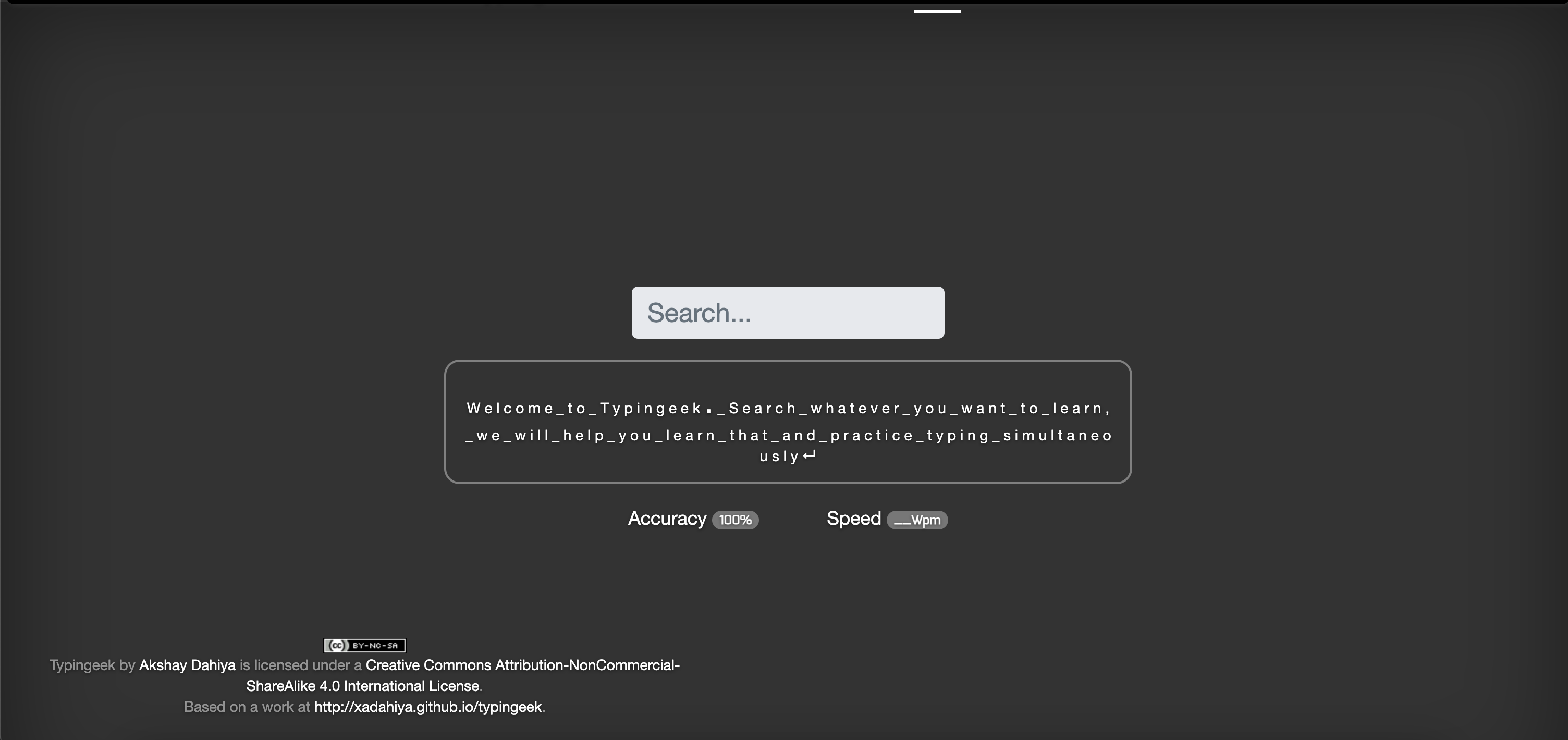
I stopped working on this here (Back in 2016 IIRC)
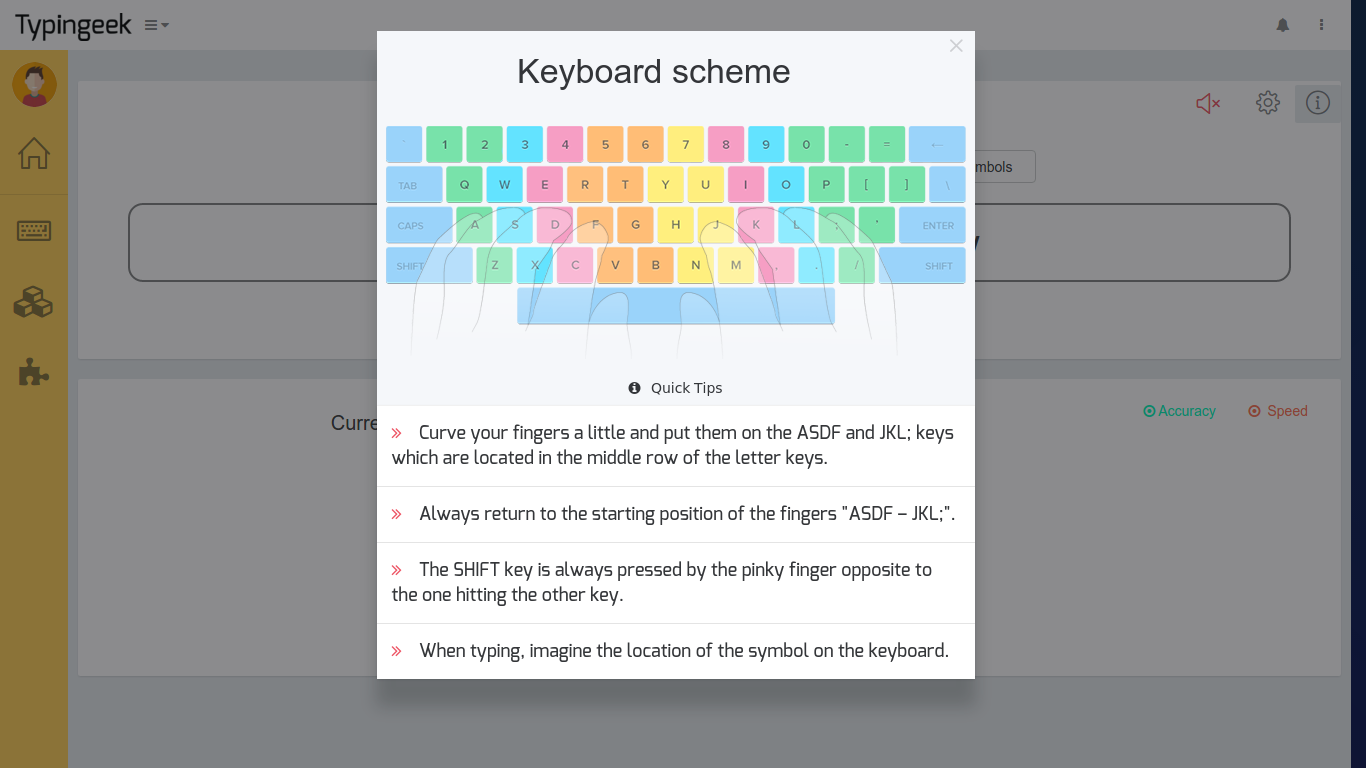
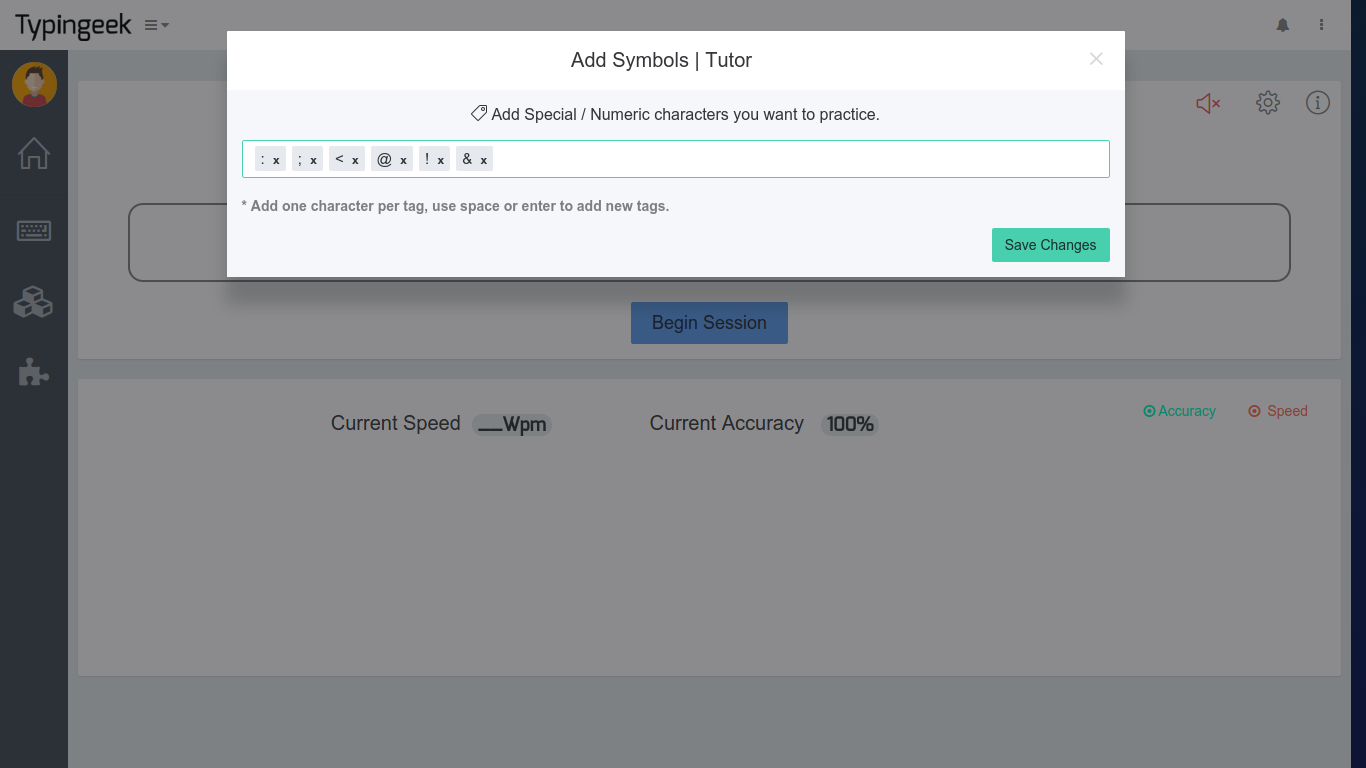
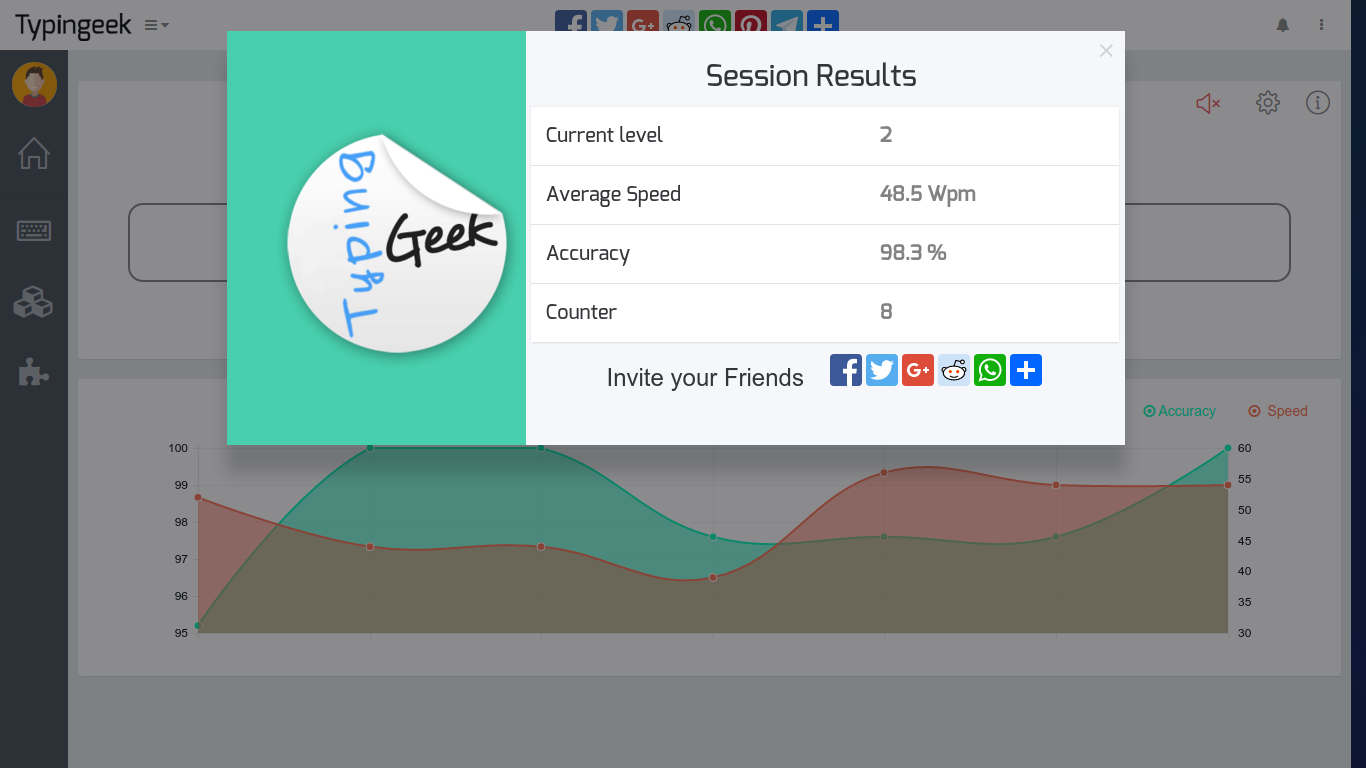
The project actually got some decent traction, but then… you guessed it, I got bored with it again!
Another thing that totally grabbed my attention during my third year was Google Summer of Code. I’d done a bunch of courses and projects, but my open-source contribution experience was, well, pretty much zero. Still, I decided to just figure it out as I went. Back then, you had to pick one or two organizations from a list of GSoC participants and contribute to their codebase to get noticed. Then, you’d whip up a proposal detailing what you planned to do over the next few weeks. It took some serious hacking (the good kind!) and a whole lot of effort, but I got in! The organization was Hydra Ecosystem, under the Python Software Foundation (a cool umbrella org). My project was Hydrus and a Simulation to demonstrate the capabilities of the Hydra Draft. Through that, I learned a ton about building web development frameworks, simulating behaviors, and the Semantic Web – mind-blowing stuff!
After I finished, I kept working with the Org and even became an Org Admin and Mentor for the next three years. I also got to go to the Google Mentor Summit in Germany, where I met a bunch of other awesome open-source mentors and admins. It was such a cool learning experience!
Okay, this is getting a bit long, so let me speed things up and just hit the highlights. After graduation, I landed a gig at Fidelity International, where I learned the ropes of investing and helped design tools for Business Analysts. Everything was cool, but being in a big organization, things moved at a snail’s pace, and honestly, I got super bored in about six months. So, I decided to ditch it all and go for a Master’s in Machine Learning. I even got into Georgia Tech! But then COVID hit, and moving to the US didn’t seem like the smartest idea. So, I decided to do the program remotely through OMSCS.
During my Master’s, I spent a ton of time doing research and building tools (mostly anti-plagiarism) to help make learning at scale actually work. We worked on all the cool, hyped stuff: fancy invisible markers in code, a chatbot that could impersonate freelancers to catch students, cheating detection in MCQ exams using pattern analysis – you name it! Our team even got featured in multiple articles in places like Forbes and Times Higher Ed. We also published two research papers in Learning @ Scale (Paper 1, Paper 2). Most of these tools are still being used at Georgia Tech to keep an eye on students who try to plagiarize (with some sweet improvements, of course!).
While I was doing my Master’s, I was also working at an AI startup called Hypersonix, where I spent my free time building their backend infrastructure and auth-related tools. Near the end of my Master’s, I started messing around with Blockchain Development and Crypto. I won’t bore you with all the details, but I spent about two hours learning the ins and outs of blockchain and crypto. Then, I decided to leave Hypersonix and dive into blockchain full-time. That’s when I joined Powerloom (December 2022).
After contributing to 50+ repositories over 14 months, here we are, on a flight to attend ETH Denver, and guess what? I’m still not bored! 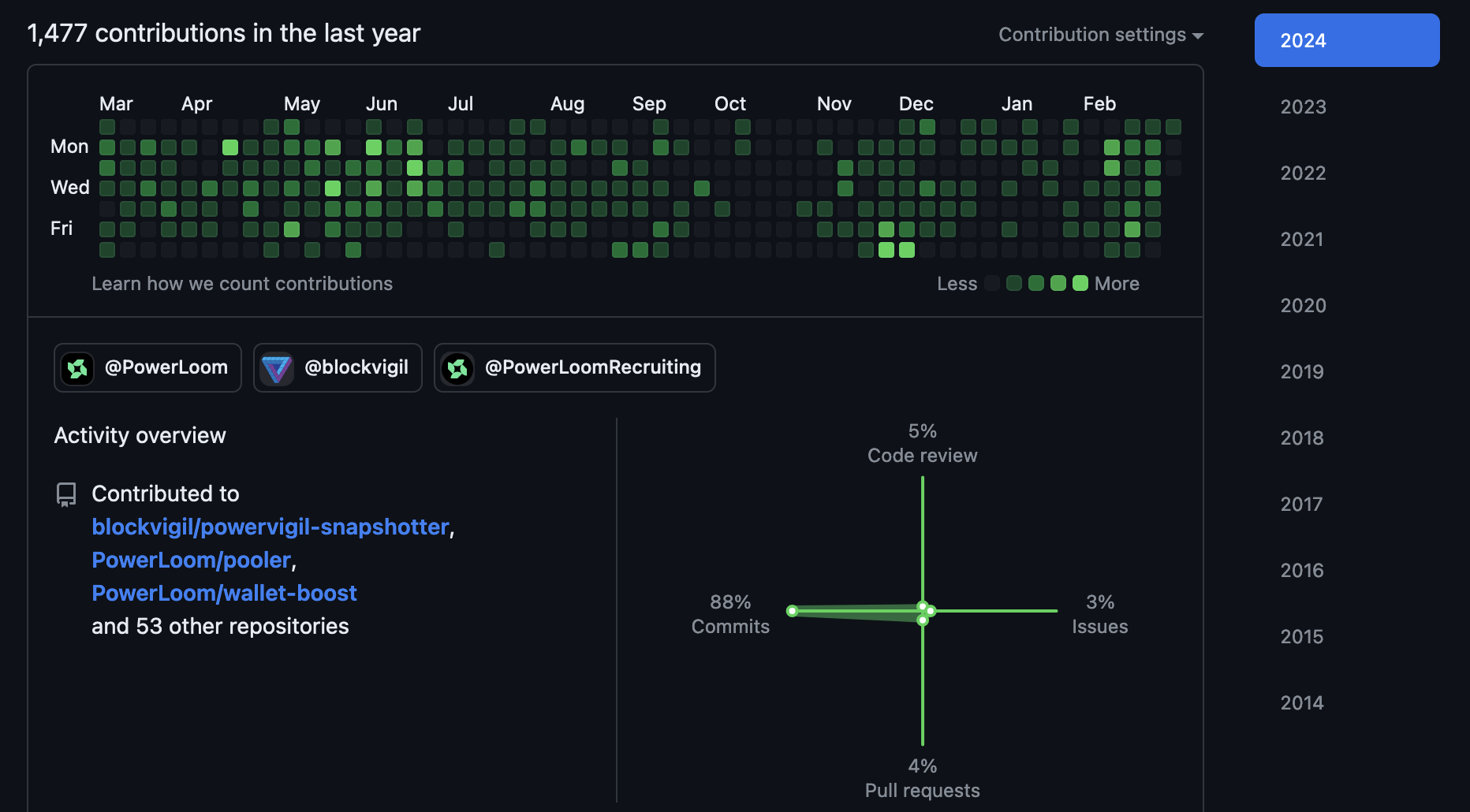
I’ll spill more about my Powerloom journey in the next part, but for now, I’m gonna catch some Zs. It’s been a long day!